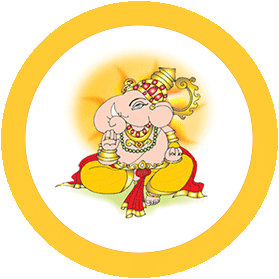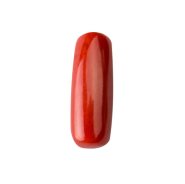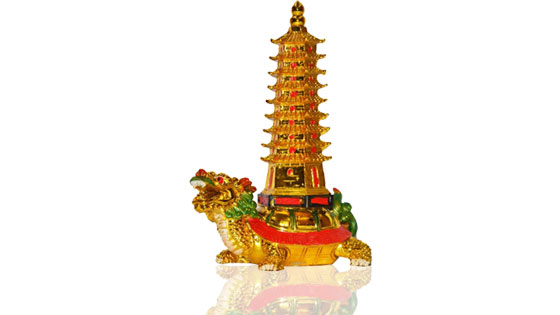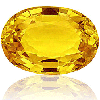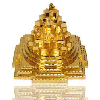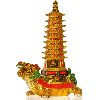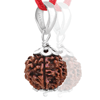Concept of Hygiene in Yoga

Even though scrupulously observed, the mere care of the various organs as previously outlined, is not considered sufficiently effectual by the yogins without a strict observance of certain general matters in hygiene as the air, food, and water, etc. These conditions exert with certainty such marked influence upon the health of an individual that even the slightest variations in respect of air, water, and food, etc., produce abnormal conditions amongst the normally healthy. The well being of an individual, therefore, is really the totality of the care of all the different and vital organs individually and collectively, plus the necessary precautions in and observances of general hygiene.
There are diseases that attack man (i) through air from dust, dampness, and poor ventilation, etc., (ii) through food if not well balanced, insufficient, improperly cooked or unclean, (iii) through water when it is dirty, impure, infected, and stagnant etc., and (iv) through many other similar sources which cannot actually be ascribed to neglect of personal prophylaxis with regard to different organs and their purification. These considerations are, therefore, grouped under the common term of Hygiene in General, some of these factors forming a part of public or domestichygiene.
In matters of general hygiene, the yogin, of course, is concerned more about himself than about the generality, and the yoga suggestions in these respects, thus, are principally guided by considerations of personal hygiene. Nonetheless, it is interesting to note that the practical yogins had not overlooked the fundamentals governing hygiene in general. On the contrary, they have given the matter their closest attention and actually succeeded in formulating a tentative scheme of hygienic living which, interpreted in modern terms, may be found both rational and scientific.
AIR
Air is biologically recognized as the first necessity of life, for we may live without food for weeks and without water for days, but we certainly cannot live without air for more than a few minutes. The question of air supply, therefore, is of greater importance than even of water or food supply, and good ventilation thus becomes the first rule of hygiene. 'The most important features of ventilation are motion, coolness, and the proper degree of humidity and freshness. "For independent considerations, these may be classifieds (a) climate, (b) housing, (c) clothing, (d) out of door living, and (e) breathing.
(a) Climate: The yogis favor temperate climate, i.e., neither too hot nor too cold because the extremes of temperature cause physiologic disturbances which they should try to avoid. Also places either too high like mountains or too low like valleys below the sea level are considered unsuited for the practice of Yoga. Bancroft has pointed out that the partial pressure or concentration of oxygen, as also of carbon dioxide, in the alveolar air varies considerably at higher altitudes and causes exaggeration in pulse rates a consequent increase leading to activity of the vital organs which they gins should avoid in order to gain physical control and mental concentration. On the contrary, an increase in the depth of respiration which they gins strive for is best aided by an altitude sufficiently higher than at the sea level. Between these two extremes, the yogis, as a golden mean, suggest a place which is neither too high nor too low, i.e., about 1,600 to 2,000 feet above the sea level.
Besides this, the chief requisite of a good climate is the opportunity it offers to live, out of door as much as possible. These moderate levels again are best suited to such purposes as they offer uniform temperature (Kellas).
(b) Housing: Next to climate comes the housing problem. It has an intimate relation to health which can hardly be overlooked since morbidity and mortality are also governed by housing conditions. While considering sanitation in house construction it is essential to pay due attention to location. It has been observed by Gheranda and other authorities on Yoga that "the practice of Yoga should not be attempted in a far off country (away from home), nor in a forest, nor in a capital city in the midst of crowds. If one docs so, he mars success. In a distant country, one is likely to lose faith because of Yoga not being known there; in a forest," one is without protection; and in the midst of a thick population, there is the danger of exposure, for then the curious will certainly trouble him. Therefore, let one avoid these three Further, the requisites of a proper location are that the same should be free and far from rocks, water and fire."These, are sanitary considerations not to be passed over lightly by anyone who wants to pursue the arduous course of Yoga. By 'water' is meant dampness; by 'fire' is meant earthquakes and volcanoes ; and 'rocks' mean jungle habited by insects, reptiles, and tigers etc. The location of the dwelling itself should be of sufficient elevation to admit abundant supply of fresh air and sunlight. According to Yajanavalkya, Svatmarma and others the approximate size of a room for the yogin is calculated to be about 9 x 12 x 12 feet which would contain the amount of cubic space an average being taken at 1000 cubic feet after Bergey required for an adult. A thatched roof of the yogin's hut really secures the necessary dryness by its hygroscopic property in damp weather (dried by free ventilation and sunshine) and thus contributes largely to the stock of infra red or dark radiant heat considered so essential for the health, of an individual.
Curiously enough, while the yogins hold dispassionate attitude towards life, the wealth of natural scenery and gardens, however, has a great attraction for them. Yajanavalkya, Svatmarma, and the author of Togatatvaprakasa emphasize that the dwelling house of the yogin should be surrounded by the most delicate flower gardens and groves with fruit bearing large shady trees encircling the compound, and a stream of clear water flowing near the premises. It is further considered essential that at such places Nature herself should be so abundantly beautiful that the eyes of the yogin resting upon such scenery might become calm and concentrated even by the very sight of it.
Constant and natural disinfection, with a view to avoiding insects and germ laden atmosphere, of such a dwelling house is thought imperative and ought to be secured through scrupulous cleansing, dusting and smearing of the entire surface with cowdung a supposedly strong disinfectant in itself serving the purpose of an ordinary whitewashing every day. To maintain uniform temperature and further to avoid draught, ventilation is secured not through the orthodox design of windows which are not recommended but through an entrance door, mostly kept open at all times, with an easterly exposure.
For an individual, these sanitary considerations of the yoga system of housing, insecticide, and germicide, etc., are quite sufficient, remembering the fact that the yogin is advised to live alone (ekante) and has a separate hut to himself. Roseau considers the detached one man dwelling with ample space all around it as the most ideal housing for it avoids overcrowding and stands as the best preventive measure against infection and disease.
(c) Clothing: Modern investigations in air hygiene teach us the need of fresh air and ventilation which really concerns the skin as much as the lungs. The hygiene of clothing, therefore, assumes a new and hitherto unsuspected importance. This includes ventilation freedom from pressure, moderate warmth and cleanliness. The yogins, while generally undressed except for a piece of cloth over the loins the ideal of modern natural living and Nature Colonies prefer the use of loose porous garments like the togas and robes, mostly prepared from cotton or silk, in cold and damp weather only. These are always loose and thin in texture, porous, light in weight and easily washable carefully washed everyday after they have been used once, and dried in open sunshine. Light colours such as white, yellow and saffron which absorb fewest of the heat rays and most of the U.V. radiations are usually selected for such purposes
(d) Outdoor Living: Except for the periods of meditation and secret practices of Yoga, the yogin passes the rest of his time in the study of Nature and out of door pursuits, viz., gardening, growing of vegetables, picking of fruits and flowers, and strolling long journeys are precluded since they are likely to cause strain, discomfort, and distraction. Science has proved that the air of even the best ventilated houses is not as good as outdoor air, and the yogins, spending a large part of their time in open air and sunshine, enjoy the best of health and the greatest longevity.
(e) Breathing: The interchange of air in ordinary breathing is very poor and a much larger percentage can be exchanged by efforts at conscious deep breathing as taught by practical Yoga. Apart from the oxygen value, it helps to equalize the circulation of blood throughout the body, by bringing into action the unused abdominal muscles. Yoga breathing methods have also a very great sedative nervous effect which tends to mental composure and concentration.
FOOD
The value of dietetics for the promotion of good health and longevity, and also as medicine in the treatment of diseases was fully known in India not only to the yoga hygienists but also to the ancient medical authorities. Surprizing as it may seem, it is only recently that the modern scientists have found it needful to pay critical attention to this all important subject of health via food. Crile, Friedenberg, Carlson and others have succeeded in proving through laboratory tests that the proper adjustment of diet not only prevents and cures certain diseases but may even help to prolong human life; and further that with a change in diet, it is quite possible to change even the character of an individual.
What has already been alluded to as the fuel energy of diet (annapanendhanaiskagnih) by the ancient Indian scientists has now been acknowledged as the philosophy of fuel units by Banedict, Hindhcdeand others; and modern dietetics is based upon this appendix to the already existing knowledge of food values. What is called calory is really the matra which measures the units of food value available from both solid and liquid nutrients for maintaining body heat and energy. The daily calorific requirements vary with each individual according to the sex, age, weight, occupation and a number of other minor factors. It also varies with the quality and quantity of foods and drinks.
It has, however, been observed that any food or drink specified as nutrients either too rich or too poor in calories and over or below the average requirements of an individual cause physiologic disturbances.
It is thus easy to realize that both (a) the quality of food as well as (b) the quantity of food play an important part in the well being of a person and need consideration. The yogins, fortunately, recognized both these issues, and while they may have failed to philosophize the details of analysis in terms of proteins and carbohydrates, fats and minerals, calories and vitamins, they certainly did hand over to us their precious experience of ages on dietetics which, in the light of our modern researches on the subject, may be found scientifically correct more so, when judged by its antiquity, environments', and apparently non scientific and metaphysical perspective.
In effect, let aside dietetic philosophy, given an ordinary every day diet a diet balanced by the individual?s natural impulse and preference for quality, quantity, taste and economy it makes no difference what really the healthy individual eats. Most people need know very little about the ash content of their orange juice, the vitamins in milk, the fat in butter, the calorific value of rice and wheat, or the carbohydrate, protein or mineral contents of vegetables and fruits. The yogins believe that, in the selection of food, man may still profitably heed the dictates of his instinct and experience.
(a) Quality of Food: The yogins hold, irrespective of their ethical principle of non injury, that man is really a herbivo frugivorous animal. That a meat diet is unsuited to human digestion, and that it causes more diseases than a mixed or a purely vegetable or fruit diet has been established through recent experiments. Lusk, Rubner, Mc Collum and their colleagues have, through their laborious tests and practical experimentations, proved beyond a shadow of doubt that the users of low protein and non flesh dietaries have far greater endurance than those who are accustomed to the ordinary high protein and full flesh or mixed dietary. Similar results have also been broadcast by various investigators in Germany, England, Porto Rico and many other places. Consequently, modern dietitians now advocate most strongly the exclusive use of dairy products, vegetables, fruits and nuts as the ideal food for man.
Even among the vegetables and fruits, the yogins give preference only to certain varieties which they consider exceptionally valuable to the sedentary mode of yoga living. For this reason, the nutrients which are pure, agreeable, sweet, nourishing and easily digestible become generally recommended. Thus, the constituents of yoga dietetics comprise the following: (i) with regard to the dairy products and sweets, the yogin may partake of fresh milk products, honey and sugar ; (ii) among the cereals, he is allowed to select from wheat, barley and rice; in the leguminosae, he can choose from Phaseolus mungo and Phaseolus radiatus ; (iii) in the vegetables and herbs, he may have egg plant, cucumbers all the edible varieties okra (Hibiscusesculentus) and Luifa acutangulla, with a liberaluse of fresh green leaves of spinach, sprouts and the five potherbs more or less similar to lettuce and celery etc. which are regarded as the best food for the yogin ; (iv) among the roots, he should confine himself only to the medicinal or edible roots (certain varieties more or less similar to carrot and beet etc.) ; and (v) among the fruits, he may have mango, jack fruit, Anannas sativus, certain types of berries, jujube, fig, plaintain, dates and rose apple, etc.
No spices are allowed to the yogin as they have been found to be stimulating and harmful. Even the use of common salt is considered prejudicial to health possibly because the green and leafy vegetables and other food recommended are sufficiently rich and, indeed, some of them are exceptionally rich in mineral salts. It may be pointed out that recent researches by prominent doctors in America have lead to the disclosure that. By taking large quantities of salt, with your food, you may be killing yourself quicker than Nature intended. Chronic heart failure is partly due to a 'perverted diet rich in salt.' The average man consumes each day over 200 times as much salt as what a gorilla needs a day for his weight. Highly seasoned stuffs and stimulating drinks are regarded as unsalutary to the yogin. Things that are sharp, sour, pungent, bitter and heating are likewise prohibited. Apart from the use of fresh green vegetables and fruits the latter to be used when ripe the food that having been once cooked has grown cold and is heated again is considered unhealthy. Again, fried and roasted articles, and foods and drinks deprived of their nutritional values are among the prohibited foods.
From the above list of the yoga dietary and other hygienic precautions, it becomes quite evident that a well balanced purely vegetarian diet is preferred to either a mixed or a full flesh diet. Its specific advantages are : (i) that it is usually easily digestible,(ii) that when selected in a proper combination, it satisfactorily and completely fulfills the average nutritional needs of an individual, and (iii) that therefore it forms the most ideal diet especially for those engaged in higher mental pursuits leading somewhat sedentary life Moreover, the varieties recommended leave ample scope for selection and combination of the dairy products, cereals, vegetables and fruits etc., all of which have been so chosen as to contain the highest nutritive value, easy digestibility, agreeable taste and medicinal qualities. Metchnikoff, Chittenden and others may find it surprising that the importance of balancing the ration fat, protein, carbohydrates, cellulose, and organic mineral salts, etc. whether in terms of calories or vitamins had since long been recognized by the observant yogins, and that the modern investigations in dietetics merely go to confirm their age old findings to be scientifically precise.
(b) Quantity of Food: No definite weight can be put down arbitrarily to measure the exact volume of food requirements of an individual, for if it once agrees to the calorific standard, it might be found unsuitable in sonic other respects. The yogins, therefore, consider it advisable to leave the entire matter to the judgement of a healthy and non perverted stomach. Moderation in diet, however, is emphasized as the guiding line, i.e., to eat no more or no less than what is absolutely necessary to satisfy one's appetite.
Three meals a day are considered sufficient for the yogin. Thus, he may have a light breakfast at 8 30 a.m., his lunch at 1 p.m., and his dinner at 6 30 p.m. between the intervals of the principal meals, he is advised not to eat anything. Fasting or even eating only once a day {naktabhojana) is regarded just as injurious to health as overeating(ativabhojanam) or eating before the food has passed through the stomach. The yogin should also refrain from religious fasts and similar observances.
WATER
Second in importance to air, water may be considered a prime necessity of life. Apart from being an essential article of nutrition even though not classified as such its various uses for cleanliness make the need for abundant and pure water supply a matter of utmost consideration. The yogins, however, have not overlooked this all important subject. For this, they suggest two measures: first, to select a location not very far from a spring or a river; and, second, to sink a well within the premises of the yoga monastery. Both these measures assure him of unfailing and abundant supply of pure (nirdosa) water.
As to the purity of water a really important hygienic consideration Rosenau observes that ?Pure water is a chemical curiosity; it does not exist in Nature. It is a matter of general knowledge in sanitation, however, that both spring water and river water flowing over an uninhabited rocky soil, as a rule, are of a high degree of purity, free from organic impurities(Hazen). Again, if sufficiently deep, the well water usually clear and of high sanitary quality furnishes the safest and most satisfactory sources of supply we have.
The uses of water may be classified as the (a) internal uses of water, and (6) external uses of water.
(a) Internal Uses of water : The common uses of water are drinking its use in cooking being secondary and purposes of hygienic purification. There are no specific instructions in the practical yoga treatises concerning the quantity of water to be taken each day, the matter having been left to the individual needs subject to natural requirements. Only it has been observed that one quarter of the space in the stomach is to be kept free at the time of meals for water.
As to the frequency with which it should be administered, it is stated that during meals, the drinking of water is injurious to health. The author is reminded of a certain habit of the yogins which may prove useful to many, namely, before defecation, they usually drink about a pint of water especially in the early morning at about 4 a.m. before they begin their daily duties. This might have been done with a view to washing down, as it were, the residues of the alimentary canal by increasing peristalsis, which reached the minimum during rest, and thus by incidentally facilitating evacuation. The internal cleanliness which to the yogin is a daily imperative hygienic duty involves the use of over half a gallon of water, taken internally for the purification of the mouth, the nose, the stomach, the intestines, and the bladder.
(b) External Uses of Water: Chief among the external uses of water may be mentioned the cleanliness of one's person, clothing and things. Excluding the hydrotherapeutic measures for the treatment of diseases which may require a very large quantity of water, the common use of water for personal cleanliness is a daily skin bath other than what may be termed internal baths. That a daily skin bath is extremely essential for health can hardly be denied. It is quite unusual, and is regarded even as very unbecoming, for the yogin to let pass even a single day without having his daily bath. As a matter of fact, he seldom takes his meal without first having his ablution. The time between 7 a.m. to 8 a.m., just after sunrise, is considered most suitable for this purpose. Frequent baths are believed to be injurious, so also are too early baths between 4 a.m. to 5 a.m. generally observed by many religious sects in India. Again, cold baths are not recommended; but temperate (78'F.) or tepid (87'F.) baths, i.e., neither too hot nor too cold are favoured. Lerch has found them to be the best suited to persons engaged in sedentary habits. Apart from the use of water during a bath, a vigorous rub down is followed to remove the impurities deposited on the skin. This also aids surface circulation and supplies much needed exercise and stimulation to the body.
ACTIVITY
Hygiene teaches us that it is not possible to live, healthy without engaging one's mind and body income form of activity. Disused body and mind become atrophied and perverse; and, in due course, may differ if at all very little from lifeless objects. Although to all appearances inactive, especially to outside observers the life of the yogin is really quite busy. His daily curriculum may be divided into (a) work, and (b) rest.
(a) Work: Among the mental activities of the yogin may be mentioned study, namely, religious (scriptures etc)., metaphysical (systems of philosophy and other intellectual pursuits), psychological and physiological (investigations in human psychology, anatomy and physiology etc., and active engagement in concentration and physical culture of a varied nature (therapy, physical education and hygiene outlined in this work, and evolutive processes discussed in other volumes of this series).
His outdoor work comprises gardening, walking short journeys and sometimes household duties, e.g., cooking, sweeping, washing of clothes and vessels, etc. Hard work which may lead to a state of nervous or muscular exhaustion either through mental or physical fatigue is prohibited at all times. He is further strictly required to limit his activities only in light pursuits avoiding such actions as might cause physical strain or pain. Prevention of overstrain unfortunately a very common modern ailment and monotony is secured by intervals of rest interspaced with varieties of engagements.
(b) Rest: Two main forms of inactivity, viz., rest and sleep are equally essential as are the usual activities conducive to health. From 7 a.m. till 11 a.m., the yogin is busy with his studies and personal hygiene. Then, an interval of two to three hours, i.e., upto 2 p.m., is utilized to rest, relaxation or recreation. From 2 p.m. until sunset at about 6 30 p.m., he is again busy with his usual pursuits. He seldom makes use of artificial light and passes his late evening hours in deep contemplation, chanting and music. He finally retires to bed at about 10 p.m. and enjoys an average of eight to nine hours of undisturbed and dreamless sleep. Hard bed of straw, a mat of kusa grass, a woolen carpet or a deer skin is generally preferred to soft cotton or feather beds, probably with a view to preserving uniform temperature of the body without any corresponding loss of heat.
TIME
Climatic considerations have also not been overlooked by the ancient yogins, to facilitate the study of Yoga; and it has been observed that the beginning of all yoga processes in certain seasons produce better results than at other times.
In order, therefore, to receive the full measure of benefit from the yoga practices, the aid of Nature; is sought in the form of proper selection of time and season best suited to such an undertaking. Winter November, December, January and February summer May and June and monsoon July and August are precluded as quite unsuited to commencing the practice of Yoga, most likely because they represent extremes of climate and too sudden atmospheric changes in the case of the latter. The beginner (prathamabhyasinah) therefore, is advised to start his studies only during springtime March and April or in autumn September and October when the climatic conditions are usually normal and uniform in temperature.
CONCLUSION
Leaving aside the needless exercise of ingenuity, the technical expressions in terms of an exact science, the advent of yoga hagiology its antiquity, evolution and success, its singularly natural methods of self application and self treatment as hygienic, preventive, and therapeutic measures, and its invaluable contribution to the mental, moral and psychic health of man is more than sufficient to convince any unprejudiced humanist of its unique completeness, its universal appeal and value to one and all for endowing personal good health of the body, mind and soul. A little corroborative study in the light of our modern advances in science make sit evident that the entire code of personal hygiene as formulated thousands of years ago by Yoga is based on scientific fundamentals and is profoundly wholesome. In fact, there should be no misapprehension whatsoever about these yoga practices doing any possible harm, if followed out intelligently and in conformity with the instructions given throughout this work.
In the present age of drudgery, nervous irritation, unnatural modes of living and thinking, and he mechanized life of an automaton, perchance the yogin of the genuine type observing all the yoga methods in their essential details remains, for all practical purposes, more a hygienic curiosity than a visual reality far above the standards of modern life and living. Nonetheless he is an ideal of utmost significance to man upholding as he does by his very example the virtue of such concrete measures as lead to good health and longevity. If Yoga succeeds with the yogins in the present as it did in the past, it can hardly be doubted why any man following the yoga code of controlled biological living should not live more than a hundred years.
Even though strictly individual and self contained excluding considerations of public
or domestic hygiene followed only by a selected group of the yogins in its highest
technique with regularity, the yoga hygieology literally stands first as an ideal
of purely hygienic living, If incorporated in the daily duties of an individual,
to whatever extent it is practicable or possible, in our modern ways of living,
these psychosomatic measures of the ancient yogins are sure to prove useful in bestowing
good health, in prolonging life, and in preserving sanity of mind the main objects
of all our sciences and the sum total of all human endeavors.
Astrological services for accurate answers and better feature
Astrological remedies to get rid of your problems

AstroSage on MobileAll Mobile Apps
AstroSage TVSubscribe
- Horoscope 2026
- राशिफल 2026
- Calendar 2026
- Holidays 2026
- Shubh Muhurat 2026
- Saturn Transit 2026
- Ketu Transit 2026
- Jupiter Transit In Cancer
- Education Horoscope 2026
- Rahu Transit 2026
- ராசி பலன் 2026
- राशि भविष्य 2026
- રાશિફળ 2026
- রাশিফল 2026 (Rashifol 2026)
- ರಾಶಿಭವಿಷ್ಯ 2026
- రాశిఫలాలు 2026
- രാശിഫലം 2026
- Astrology 2026








